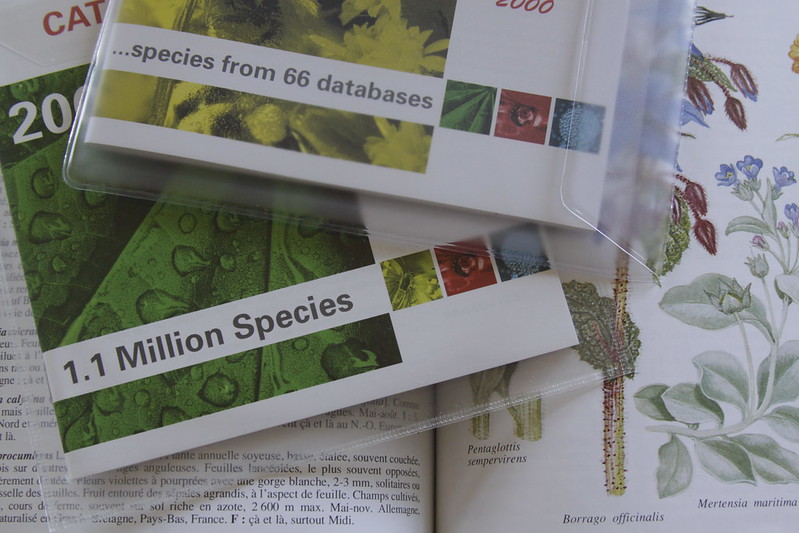|
Ethnoecology
Ethnoecology is the scientific study of how different groups of people living in different locations understand the ecosystems around them, and their relationships with surrounding environments. It seeks valid, reliable understanding of how we as humans have interacted with the environment and how these intricate relationships have been sustained over time. The "ethno" (see ethnology) prefix in ethnoecology indicates a localized study of a people, and in conjunction with ecology, signifies people's understanding and experience of environments around them. Ecology is the study of the interactions between living organisms and their environment; enthnoecology applies a human focused approach to this subject. The development of the field lies in applying indigenous knowledge of botany and placing it in a global context. History Ethnoecology began with some of the early works of Dr. Hugh Popenoe, an agronomist and tropical soil scientist who has worked with the University of Flor ... [...More Info...] [...Related Items...] OR: [Wikipedia] [Google] [Baidu] |
Indigenous Knowledge
Traditional knowledge (TK), indigenous knowledge (IK), folk knowledge, and local knowledge generally refers to knowledge systems embedded in the cultural traditions of regional, indigenous, or local communities. Traditional knowledge includes types of knowledge about traditional technologies of areas such as subsistence (e.g. tools and techniques for hunting or agriculture), midwifery, ethnobotany and ecological knowledge, traditional medicine, celestial navigation, craft skills, ethnoastronomy, climate, and others. These systems of knowledge are generally based on accumulations of empirical observation of and interaction with the environment, transmitted orally across generations. The World Intellectual Property Organization (WIPO) and the United Nations (UN) include traditional cultural expressions (TCE) in their respective definitions of indigenous knowledge. Traditional knowledge systems and cultural expressions exist in the forms of culture, stories, legends, folklo ... [...More Info...] [...Related Items...] OR: [Wikipedia] [Google] [Baidu] |
Environmental Anthropology
Environmental anthropology is a sub-discipline of anthropology that examines the complex relationships between humans and the environments which they inhabit. This takes many shapes and forms, whether it be examining the hunting/gathering patterns of humans tens of thousands of years ago, archaeological investigations of early agriculturalists and their impact on deforestation or soil erosion, or how modern human societies are adapting to climate change and other anthropogenic environmental issues. This sub-field of anthropology developed in the 1960s from cultural ecology as anthropologists borrowed methods and terminology from growing developments in ecology and applied them to understand human cultures. Environmental anthropology is a growing sub-field of anthropology because the challenges of understanding and addressing human caused environmental problems like climate change, species extinctions, plastic pollution, and habitat destruction require an understanding of the compl ... [...More Info...] [...Related Items...] OR: [Wikipedia] [Google] [Baidu] |
Scientific Method
The scientific method is an Empirical evidence, empirical method for acquiring knowledge that has been referred to while doing science since at least the 17th century. Historically, it was developed through the centuries from the ancient and medieval world. The scientific method involves careful observation coupled with rigorous skepticism, because Philosophy of science#Observation inseparable from theory, cognitive assumptions can distort the interpretation of the Perception#Process and terminology, observation. Scientific inquiry includes creating a testable hypothesis through inductive reasoning, testing it through experiments and statistical analysis, and adjusting or discarding the hypothesis based on the results. Although procedures vary across Branches of science, fields, the underlying #Process, process is often similar. In more detail: the scientific method involves making conjectures (hypothetical explanations), predicting the logical consequences of hypothesis, then ... [...More Info...] [...Related Items...] OR: [Wikipedia] [Google] [Baidu] |
Cultural Ecology
Cultural ecology is the study of human adaptations to social and physical environments. Human adaptation refers to both biological and cultural processes that enable a population to survive and reproduce within a given or changing environment. This may be carried out diachronically (examining entities that existed in different epochs), or synchronically (examining a present system and its components). The central argument is that the natural environment, in small scale or subsistence societies dependent in part upon it, is a major contributor to social organization and other human institutions. In the academic realm, when combined with study of political economy, the study of economies as polities, it becomes political ecology, another academic subfield. It also helps interrogate historical events like the Easter Island Syndrome. History Anthropologist Julian Steward (1902-1972) coined the term, envisioning cultural ecology as a methodology for understanding how humans adapt to ... [...More Info...] [...Related Items...] OR: [Wikipedia] [Google] [Baidu] |
Biodiversity
Biodiversity is the variability of life, life on Earth. It can be measured on various levels. There is for example genetic variability, species diversity, ecosystem diversity and Phylogenetics, phylogenetic diversity. Diversity is not distributed evenly on Earth. It is greater in the tropics as a result of the warm climate and high primary productivity in the region near the equator. Tropical forest ecosystems cover less than one-fifth of Earth's terrestrial area and contain about 50% of the world's species. There are latitudinal gradients in species diversity for both marine and terrestrial taxa. Since Abiogenesis, life began on Earth, six major mass extinctions and several minor events have led to large and sudden drops in biodiversity. The Phanerozoic aeon (the last 540 million years) marked a rapid growth in biodiversity via the Cambrian explosion. In this period, the majority of Multicellular organism, multicellular Phylum, phyla first appeared. The next 400 mil ... [...More Info...] [...Related Items...] OR: [Wikipedia] [Google] [Baidu] |
Seed Dispersal
In spermatophyte plants, seed dispersal is the movement, spread or transport of seeds away from the parent plant. Plants have limited mobility and rely upon a variety of dispersal vectors to transport their seeds, including both abiotic vectors, such as the wind, and living (Biotic component, biotic) vectors such as birds. Seeds can be dispersed away from the parent plant individually or collectively, as well as dispersed in both space and time. The patterns of seed dispersal are determined in large part by the dispersal mechanism and this has important implications for the demographic and genetic structure of plant populations, as well as wikt:migration, migration patterns and species interactions. There are five main modes of seed dispersal: Gravitation, gravity, wind, ballistic, water, and by animals. Some plants are serotinous and only disperse their seeds in response to an environmental stimulus. These modes are typically inferred based on adaptations, such as wings or fle ... [...More Info...] [...Related Items...] OR: [Wikipedia] [Google] [Baidu] |
Pedogenesis
Soil formation, also known as pedogenesis, is the process of soil genesis as regulated by the effects of place, environment, and history. Biogeochemical processes act to both create and destroy order (anisotropy) within soils. These alterations lead to the development of layers, termed soil horizons, distinguished by differences in color, structure, texture, and chemistry. These features occur in patterns of soil type distribution, forming in response to differences in soil forming factors. Pedogenesis is studied as a branch of pedology, the study of soil in its natural environment. Other branches of pedology are the study of soil morphology and soil classification. The study of pedogenesis is important to understanding soil distribution patterns in current ( soil geography) and past ( paleopedology) geologic periods. Overview Soil develops through a series of changes. The starting point is weathering of freshly accumulated parent material. A variety of soil microbes (ba ... [...More Info...] [...Related Items...] OR: [Wikipedia] [Google] [Baidu] |
Keystone Species
A keystone species is a species that has a disproportionately large effect on its natural environment relative to its abundance. The concept was introduced in 1969 by the zoologist Robert T. Paine. Keystone species play a critical role in maintaining the structure of an ecological community, affecting many other organisms in an ecosystem and helping to determine the types and numbers of various other species in the community. Without keystone species, the ecosystem would be dramatically different or cease to exist altogether. Some keystone species, such as the wolf and lion, are also apex predators. The role that a keystone species plays in its ecosystem is analogous to the role of a keystone in an arch. While the keystone is under the least pressure of any of the stones in an arch, the arch still collapses without it. Similarly, an ecosystem may experience a dramatic shift if a keystone species is removed, even though that species was a small part of the ecosystem by measur ... [...More Info...] [...Related Items...] OR: [Wikipedia] [Google] [Baidu] |
Worldview
A worldview (also world-view) or is said to be the fundamental cognitive orientation of an individual or society encompassing the whole of the individual's or society's knowledge, culture, and Perspective (cognitive), point of view. However, when two parties view the same real world phenomenon, their world views may differ, one including elements that the other does not. A worldview can include natural philosophy; fundamental, existential, and normative postulates; or themes, values, emotions, and ethics. Etymology The term ''worldview'' is a calque of the German word , composed of ('world') and ('perception' or 'view'). The German word is also used in English. It is a concept fundamental to German philosophy, especially epistemology and refers to a ''wide world perception''. Additionally, it refers to the framework of ideas and beliefs forming a global description through which an individual, group or culture watches and interprets the world (philosophy), world and interac ... [...More Info...] [...Related Items...] OR: [Wikipedia] [Google] [Baidu] |
Traditional Ecological Knowledge
Traditional ecological knowledge (TEK) is a cumulative body of knowledge, practice, and belief, evolving by adaptive processes and handed down through generations by cultural transmission, about the relationship of living beings (including humans) with one another and with their environment. The application of TEK in the field of ecological management and science is still controversial, as methods of acquiring and collecting knowledge—although often including forms of empirical research and experimentation— may differ from those most often used to create and Validity (logic), validate ecology, scientific ecological knowledge. Non-tribal government agencies, such as the United States Environmental Protection Agency, U.S. EPA, have established integration programs with some tribal governments in order to incorporate TEK in environmental plans and climate change tracking. In contrast to the Universality (philosophy), universality towards which contemporary academic pursuits ofte ... [...More Info...] [...Related Items...] OR: [Wikipedia] [Google] [Baidu] |
Cultural System
A cultural system is the interaction of different elements in culture. While a cultural system is very different from a social system, sometimes both systems together are referred to as the sociocultural system. Social theory A major concern in the social sciences is the problem of order. One way that social order has been theorized is according to the degree of integration of cultural and social factors. Action theory Talcott Parsons, a major figure in sociology and the main originator of action theory in the early 20th century, based his sociological theory of action system is built up around a general theory of society, which is codified within a cybernetic model featuring four functional imperatives: adaptation, goal-attainment, integration, and pattern maintenance. The hierarchy of systems is, from least to most encompassing system, respectively, behavioral organism, personality system, social system, and cultural system as well. Ritzer and Goodman (2004) summarize Parso ... [...More Info...] [...Related Items...] OR: [Wikipedia] [Google] [Baidu] |






